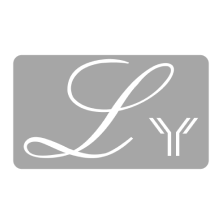Anti-Human CD4 [Clone SK3] — Purified (PhenoCycler-Fusion (CODEX)® Ready)
Anti-Human CD4 [Clone SK3] — Purified (PhenoCycler-Fusion (CODEX)® Ready)
Product No.: C3355
- -
- -
Clone SK3 Target CD4 Formats AvailableView All Product Type Hybridoma Monoclonal Antibody Isotype Mouse IgG1 κ Applications FC , IHC , IP , PhenoCycler® |
- -
- -
Validation Notes Clone SK3 has been validated for use on PhenoCycler® using [Mouse/Human] [Tissue] [Tissue Type either FFPE or FF] tissue. Antibody and Reporter DetailsReactivity Species Human Host Species Mouse Concentration 0.5 mg/ml Immunogen Recombinant protein of human CD4 Formulation This purified antibody is formulated in 0.01 M phosphate buffered saline (150 mM NaCl) PBS pH 7.4. Storage and Handling This antibody is stable for at least one week when stored at 2-8°C. For long term storage, aliquot in working volumes without diluting and store at -20°C in a manual defrost freezer. Avoid Repeated Freeze Thaw Cycles. Applications and Recommended Usage? Quality Tested by Leinco CODEX® This CD4 (Clone SK3) antibody is formulated to simplify the antibody preparation needed when performing a PhenoCycler® barcode conjugate. The suggested concentration is 1.0 mg/ml. Other Applications Reported In Literature ? FC, IHC, IP Country of Origin USA Each investigator should determine their own optimal working dilution for specific applications. See directions on lot specific datasheets, as information may periodically change. DescriptionSpecificity SK3 activity is directed against human CD4.
Antigen Distribution CD4 is expressed on most thymocytes, a subset of T cells (T helper cells,
subsets of memory and regulatory T lymphocytes), monocytes, macrophages, human peripheral
blood mononuclear cells, natural killer cells, and may be detected in thymus, lymph nodes,
tonsils, and spleen, and also in specific regions of the brain, gut, and other non-lymphoid tissues.
Background CD4 is a type I transmembrane glycoprotein with four domains and is a member of the Ig
superfamily1,2. CD4 functions primarily as a coreceptor for the MHC class II molecule-peptide complex3. CD4 initiates the early phase of T-cell activation via its association with the T-cell receptor complex and protein tyrosine kinase Lck. In addition, CD4 functions as a mediator of direct neuronal damage in infectious and immune-mediated diseases of the central nervous system. Furthermore, HIV displays tropism for CD4+ T cells4 and CD4 acts as the primary receptor for HIV viral entry via binding of its extracellular domain with the HIV-1 gp120 surface glycoprotein2,3. SK3 can be used as a reference standard in quantitative flow cytometry5,6 and to study HIV viral entry4. SK3 does not compete for binding with Tregalizumab7. Since the binding site of Tregalizumab is in close proximity to a disulfide bond in domain 2 of CD4, SK3 binds elsewhere in the CD4 protein. Lisco et al give domain 3 as the binding site8. Antigen DetailsProtein Ligand/Receptor MHC class II molecules, HIV gp120, IL-16 PubMed NCBI Gene Bank ID UniProt.org References & Citations1. Lynch GW, Turville S, Carter B, et al. Immunol Cell Biol. 84(2):154-165. 2006. 2. Wittlich M, Thiagarajan P, Koenig BW, et al. Biochim Biophys Acta. 1798(2):122-127. 2010. 3. https://www.uniprot.org/uniprotkb/P01730/entry 4. Bouvin-Pley M, Leoz M, Roch E, et al. AIDS. 34(15):2187-2200. 2020. 5. Degheidy H, Abbasi F, Mostowski H, et al. Cytometry B Clin Cytom. 90(2):159-167. 2016. 6. Wang L, Gaigalas AK, DeRose PC. J Res Natl Inst Stand Technol. 123:1-23. 2018. 7. Heim K, Dälken B, Faust S, et al. Clin Transl Immunology. 5(12):e121. 2016. 8. Lisco A, Ye P, Wong CS, et al. J Infect Dis. 223(4):645-654. 2021. 9. Chujo D, Foucat E, Nguyen TS, et al. PLoS One. 8(2):e55595. 2013. 10. Brito LA, Chan M, Shaw CA, et al. Mol Ther. 22(12):2118-2129. 2014. 11. Marin M, Du Y, Giroud C, et al. Assay Drug Dev Technol. 13(3):155-166. 2015. 12. Zischke J, Mamareli P, Pokoyski C, et al. PLoS Pathog. 13(6):e1006454. 2017. Technical Protocols |
Formats Available
- -
- -
 Products are for research use only. Not for use in diagnostic or therapeutic procedures.
Products are for research use only. Not for use in diagnostic or therapeutic procedures.


